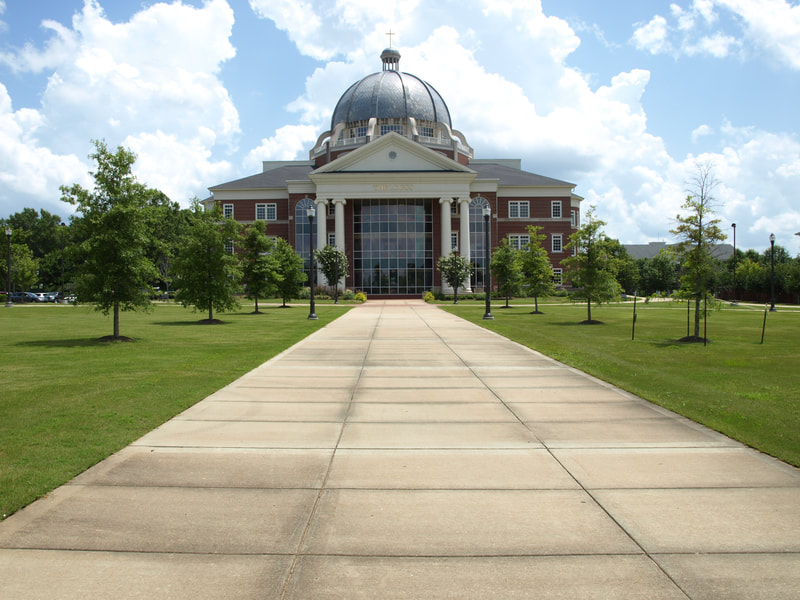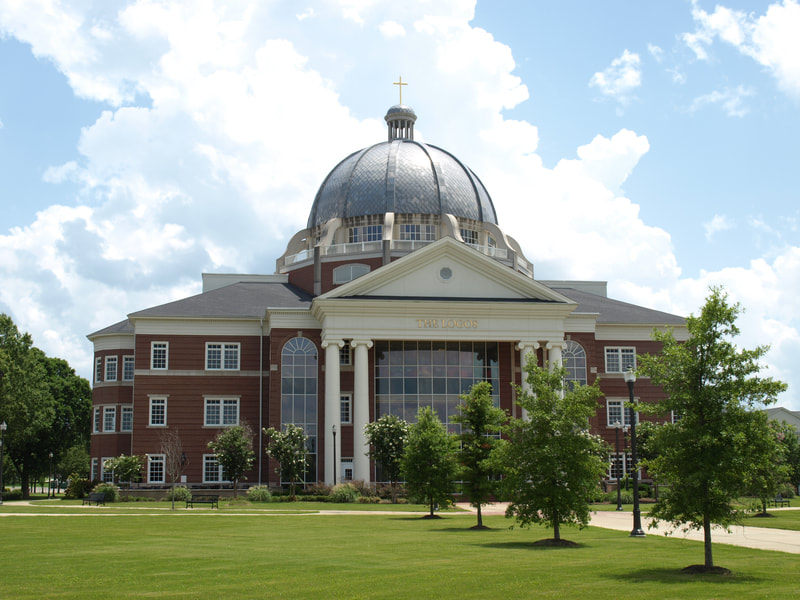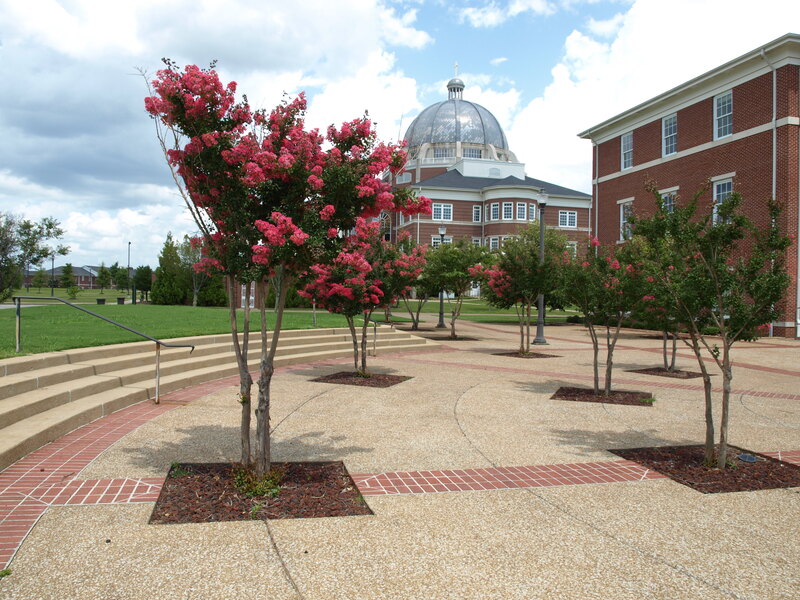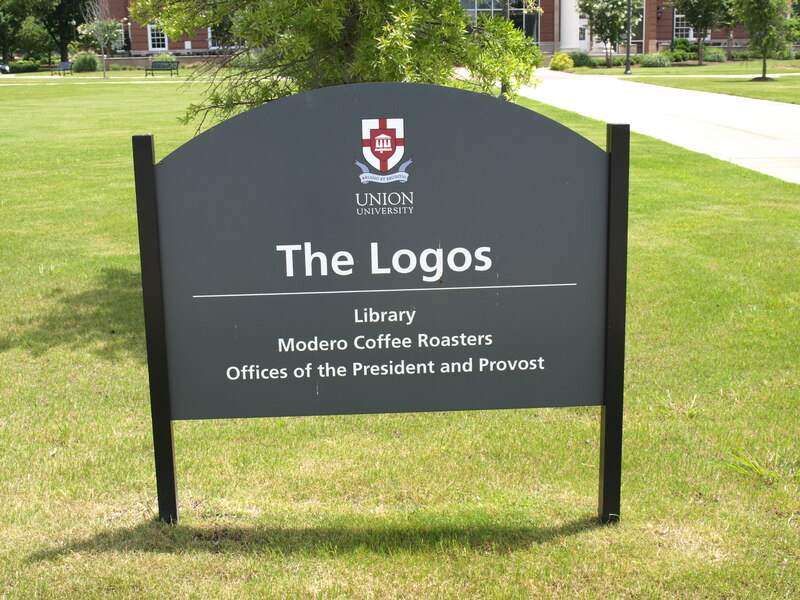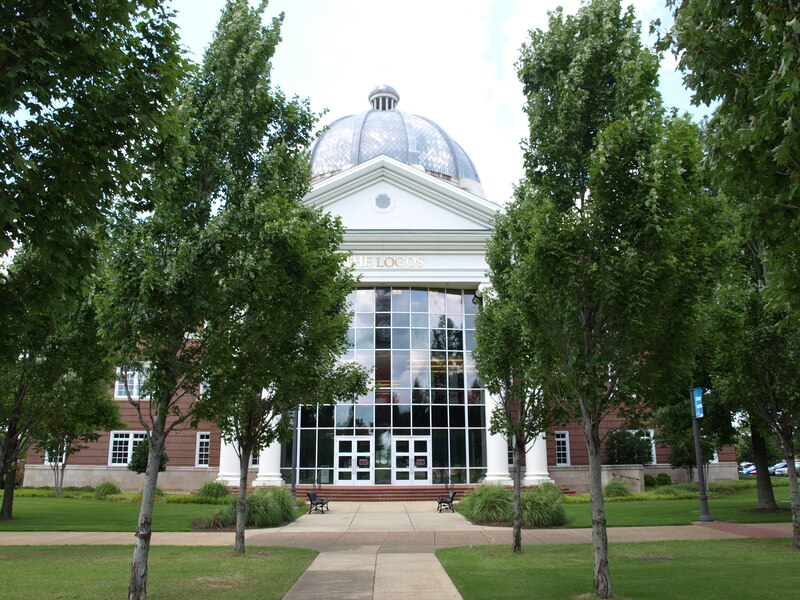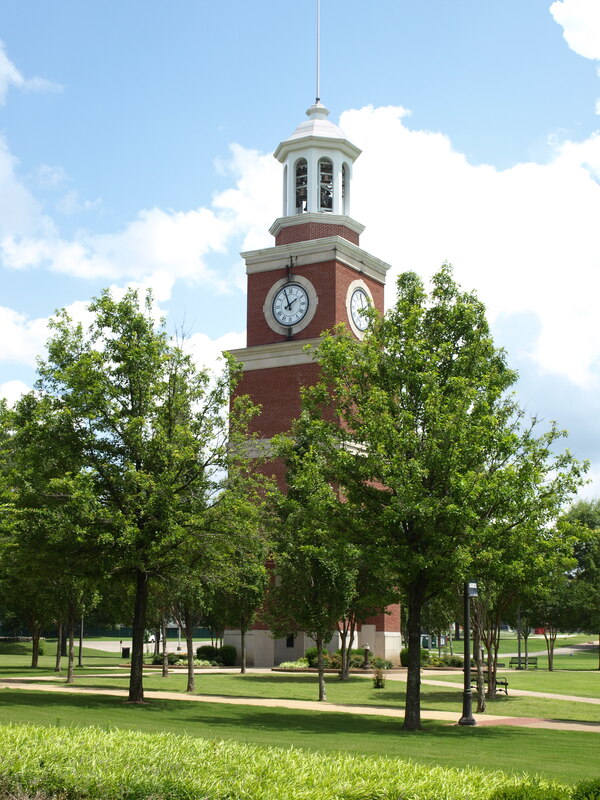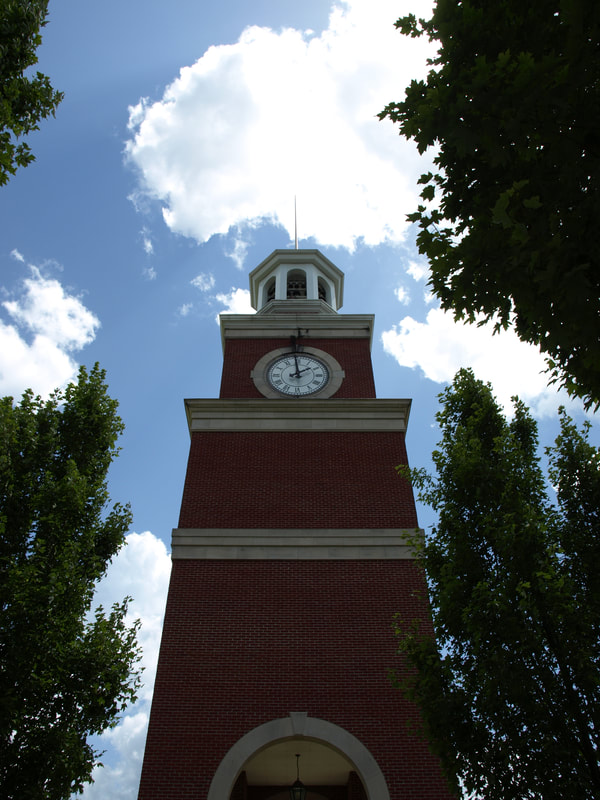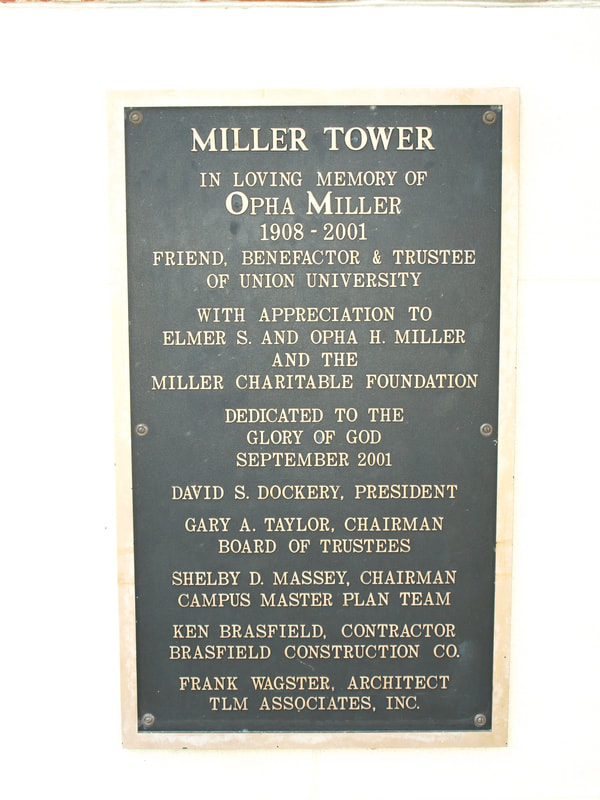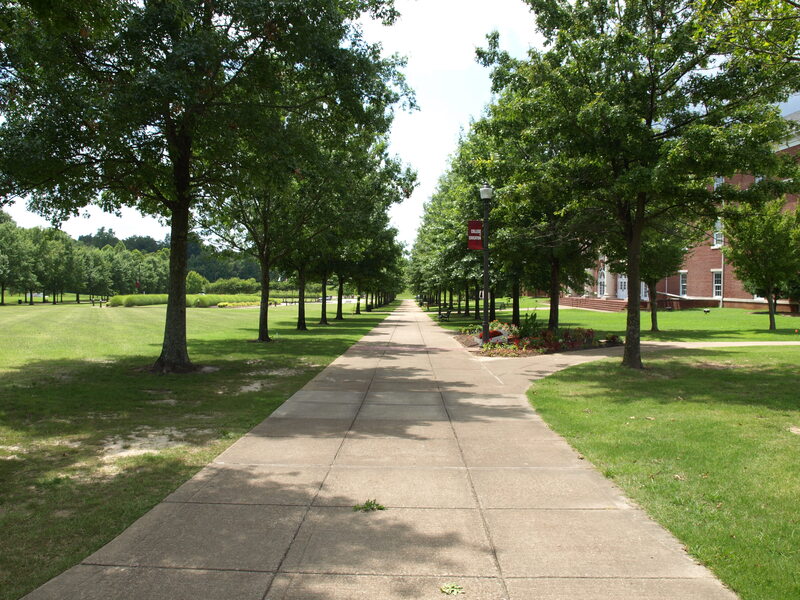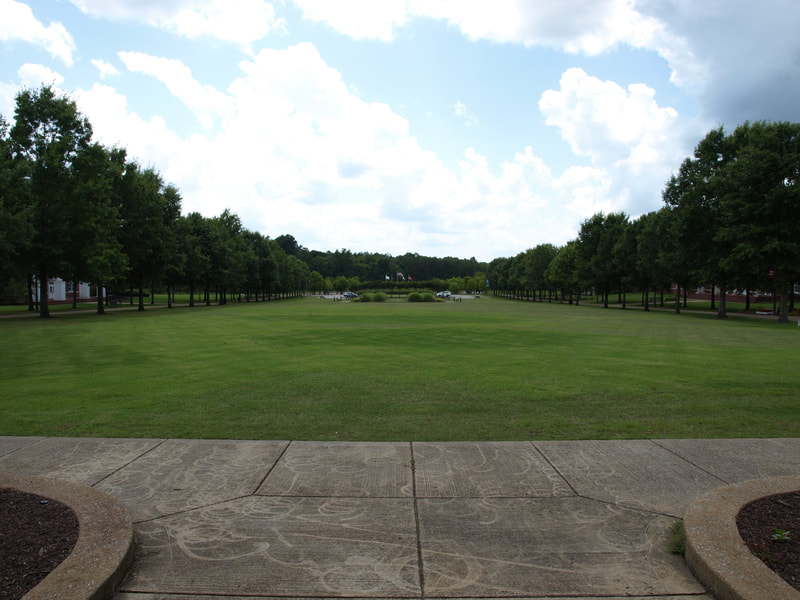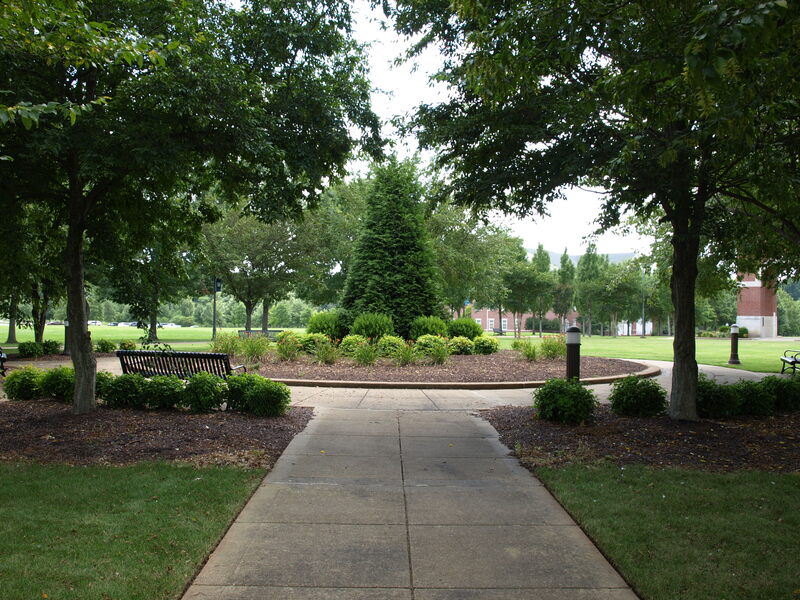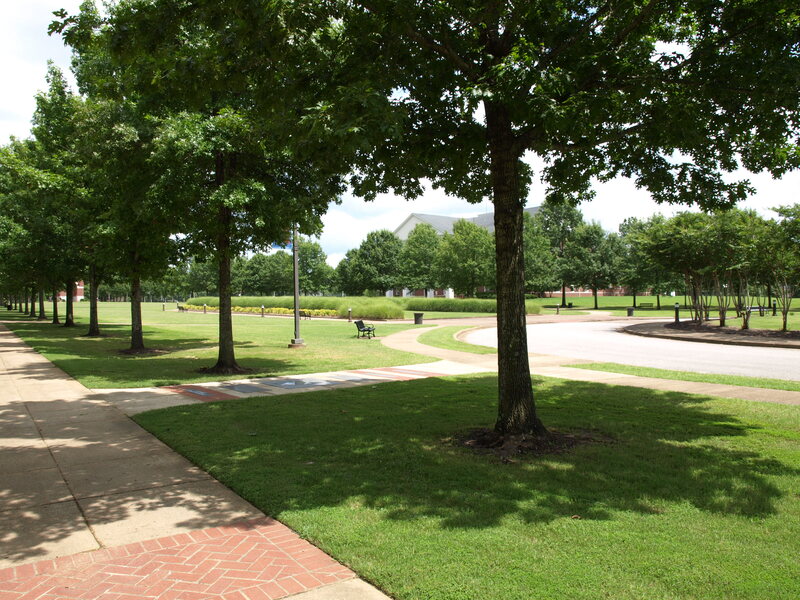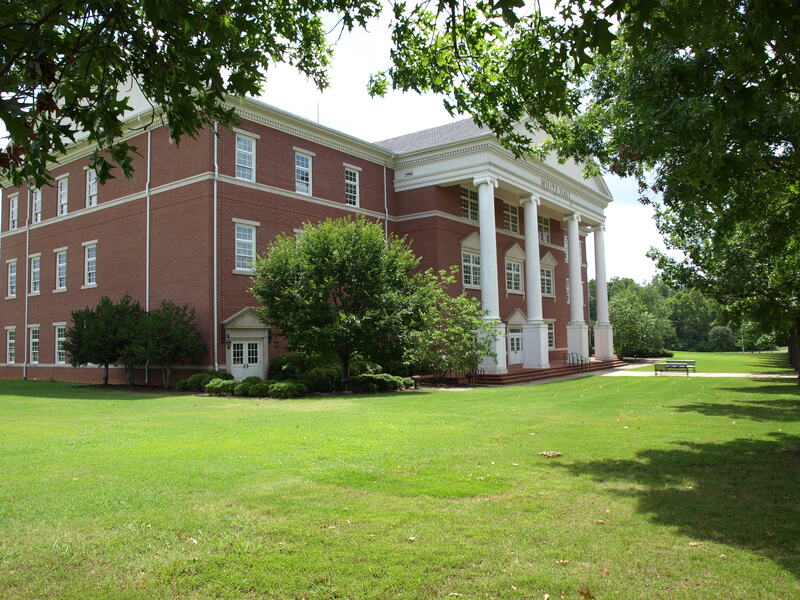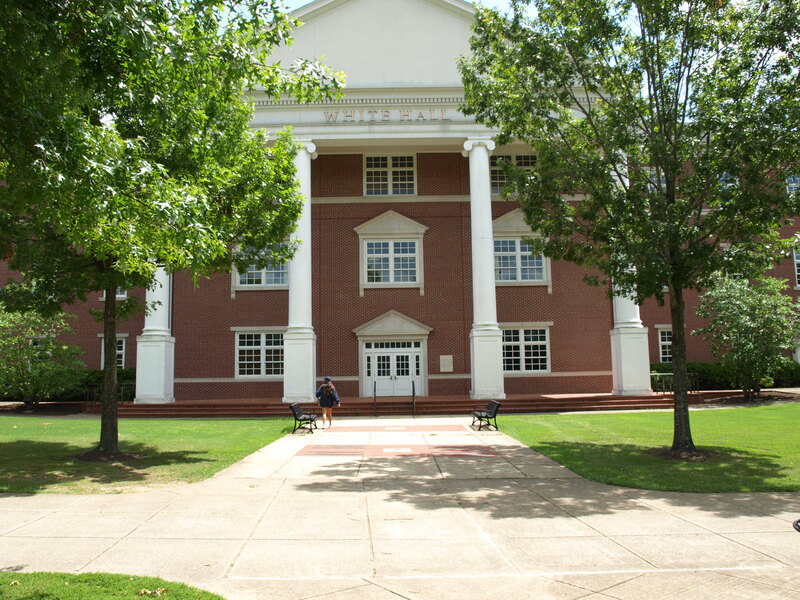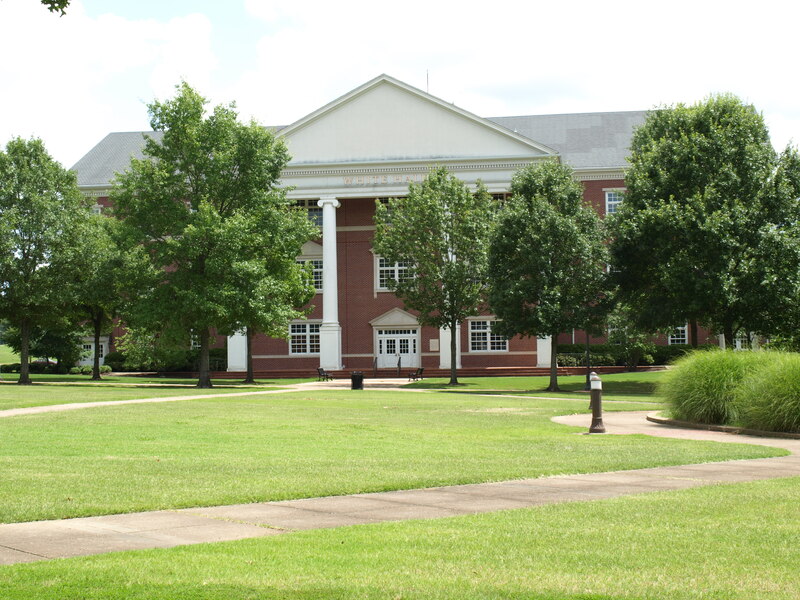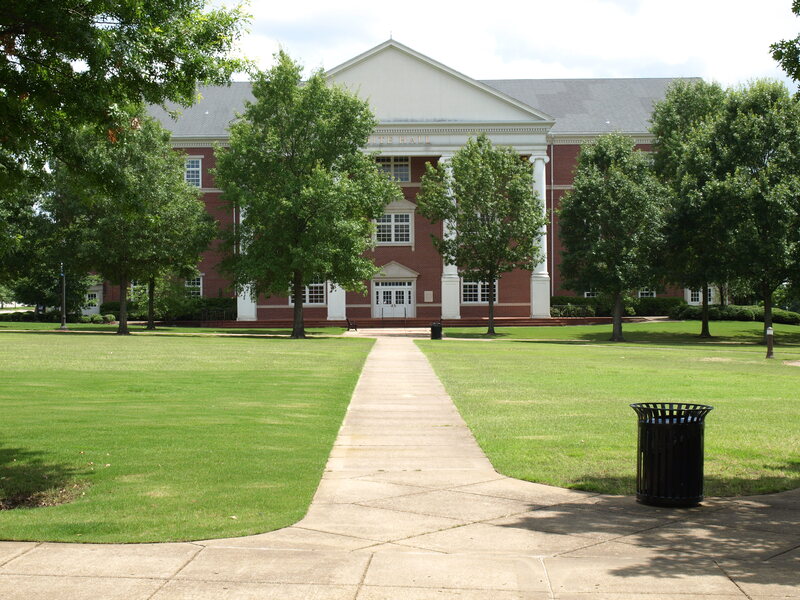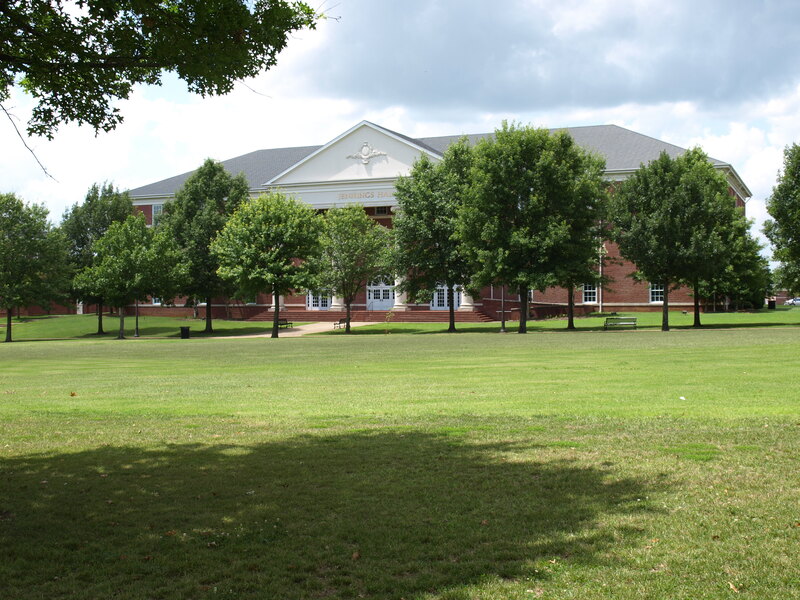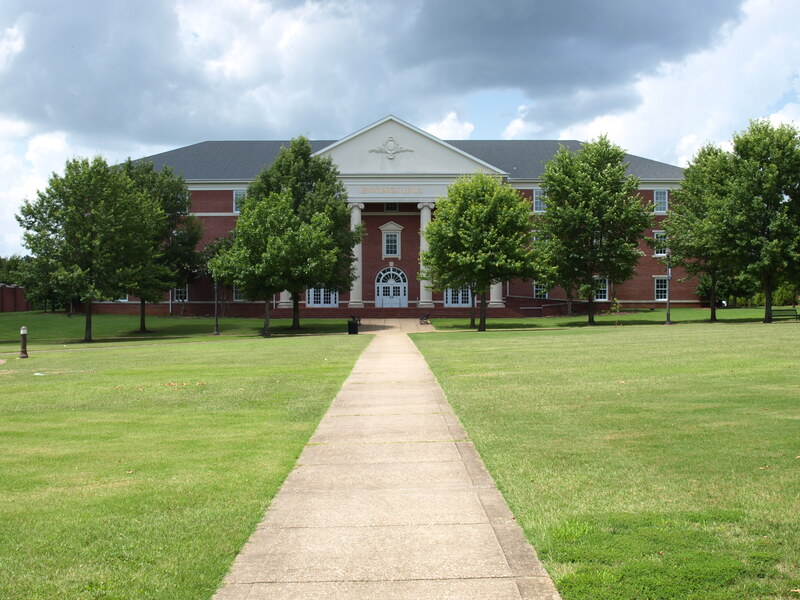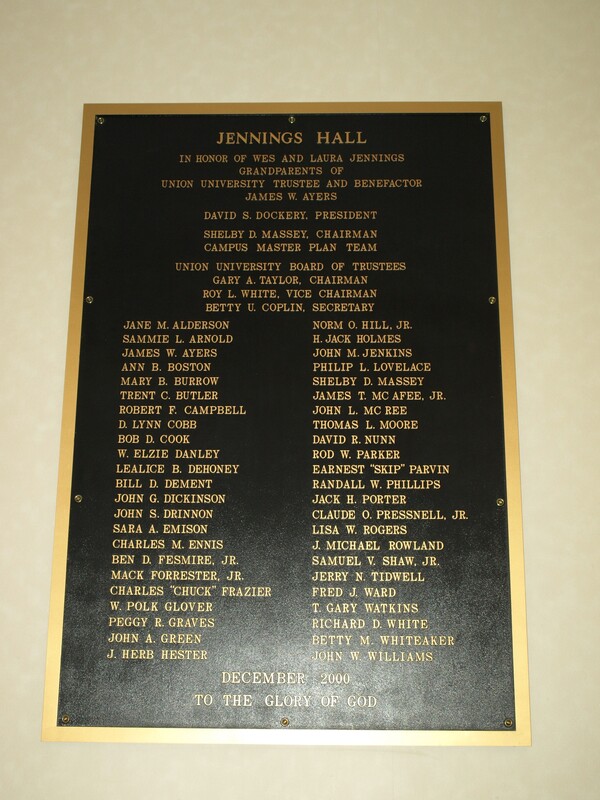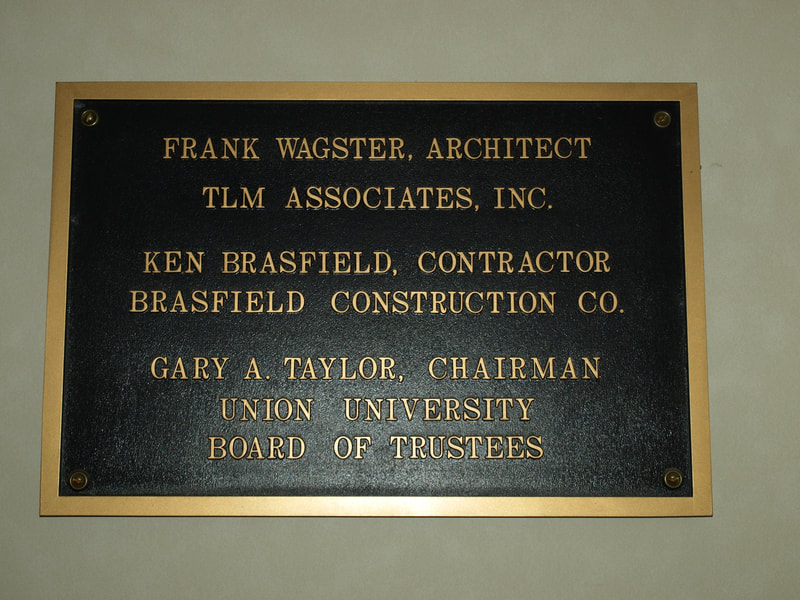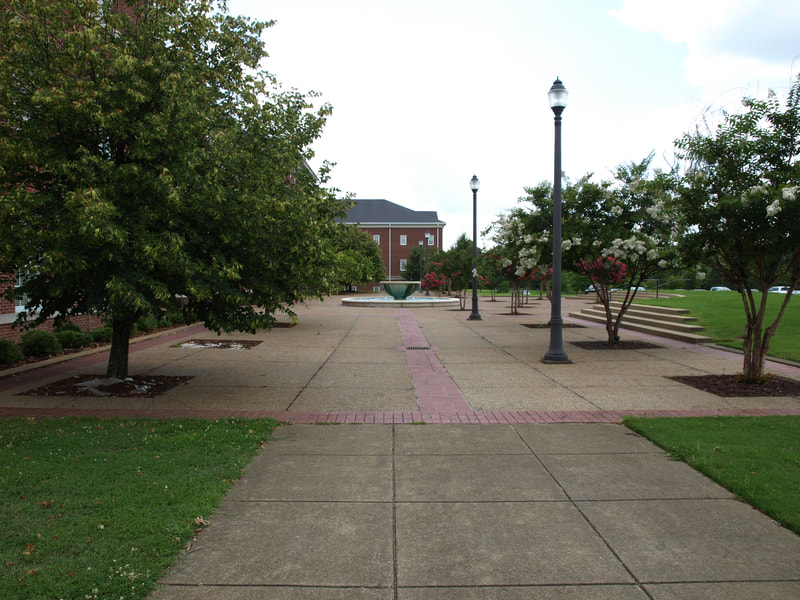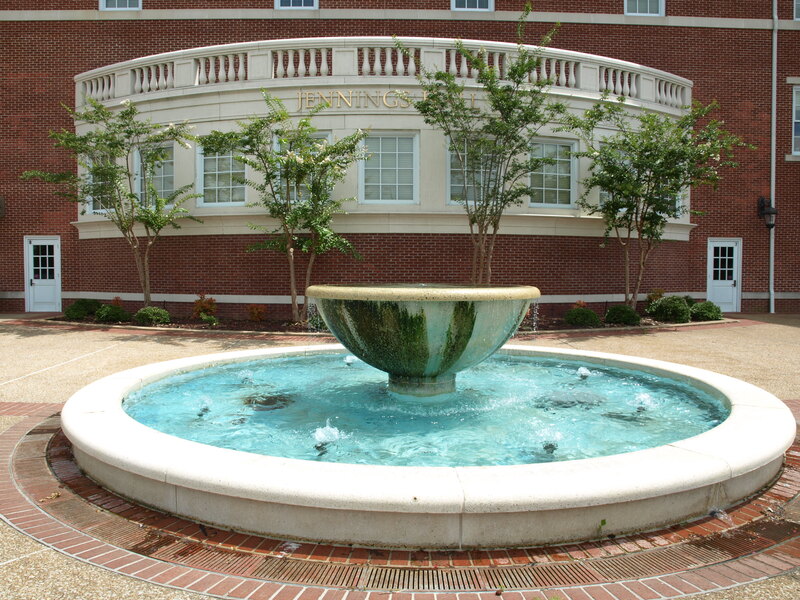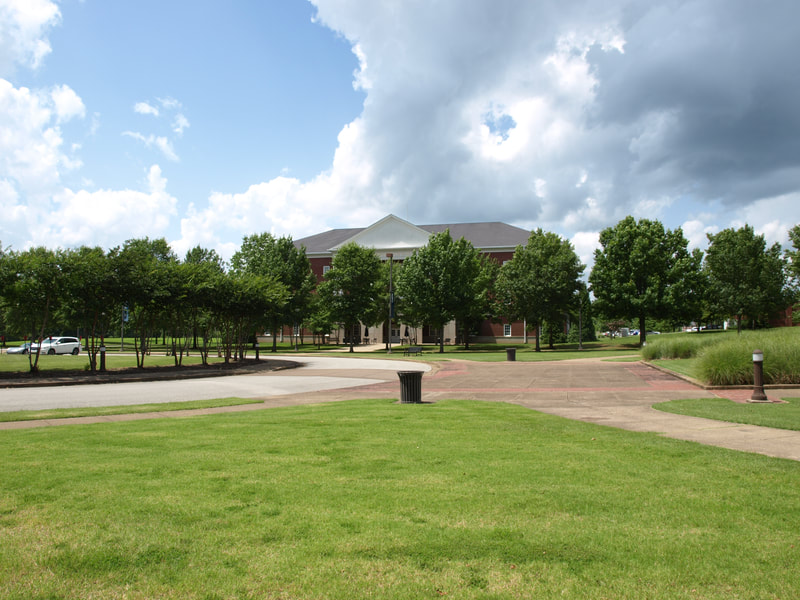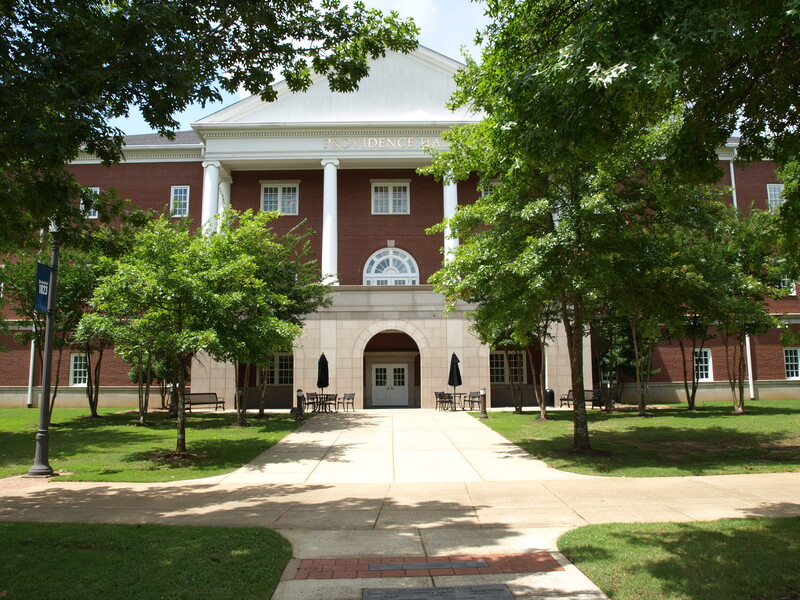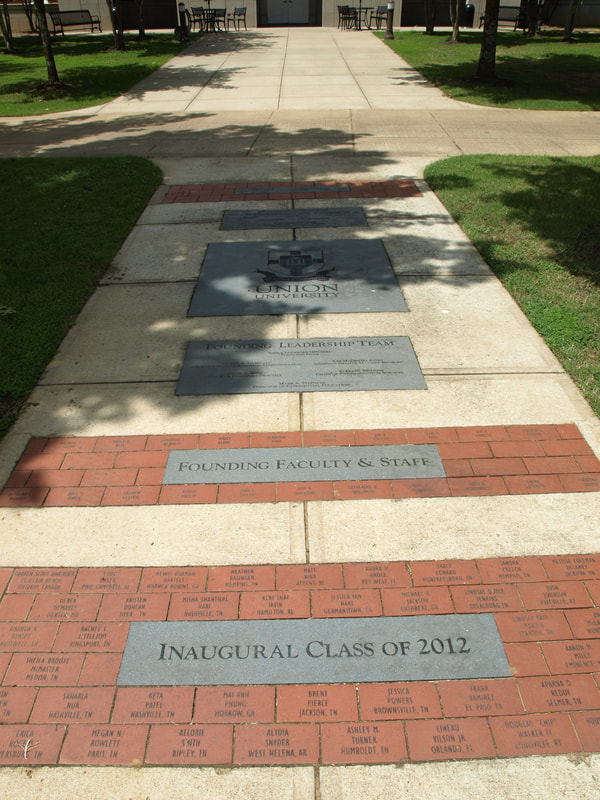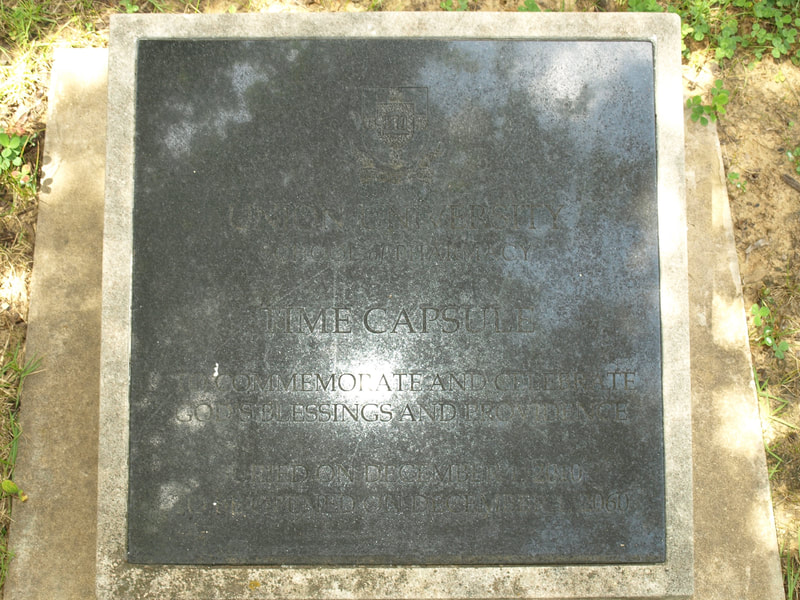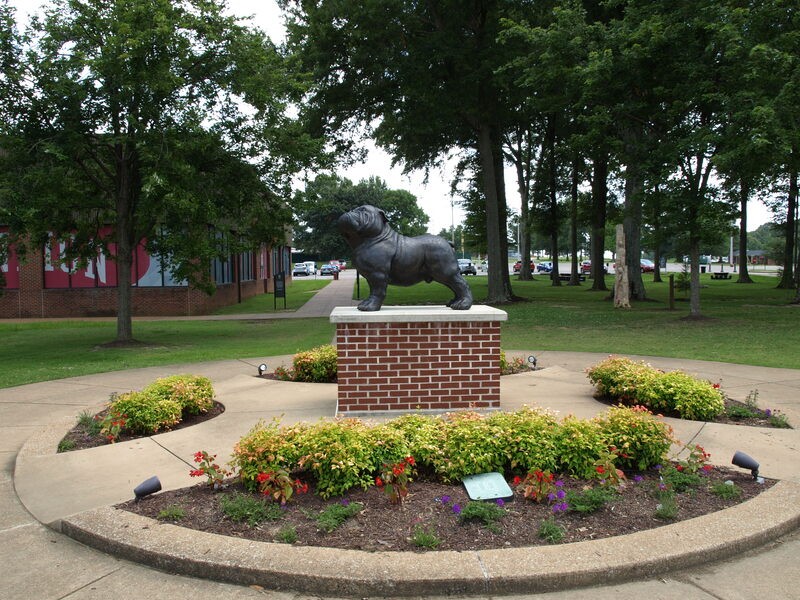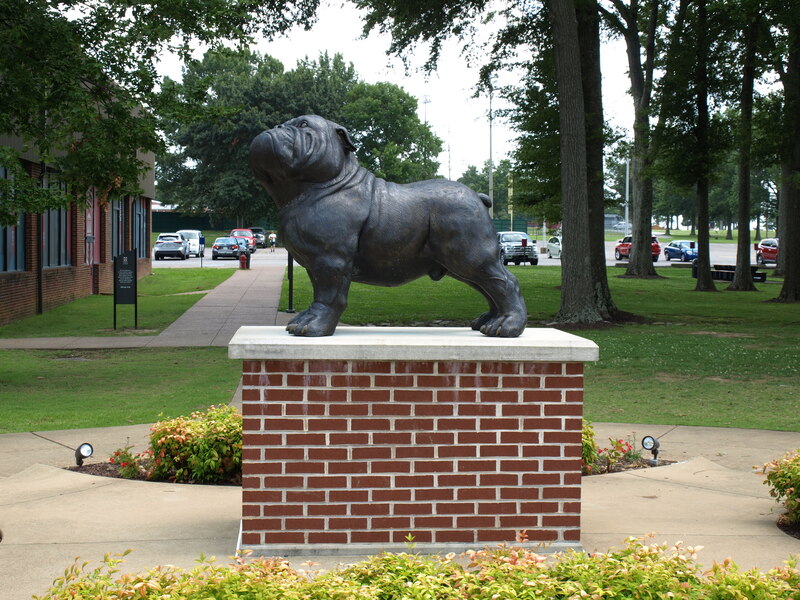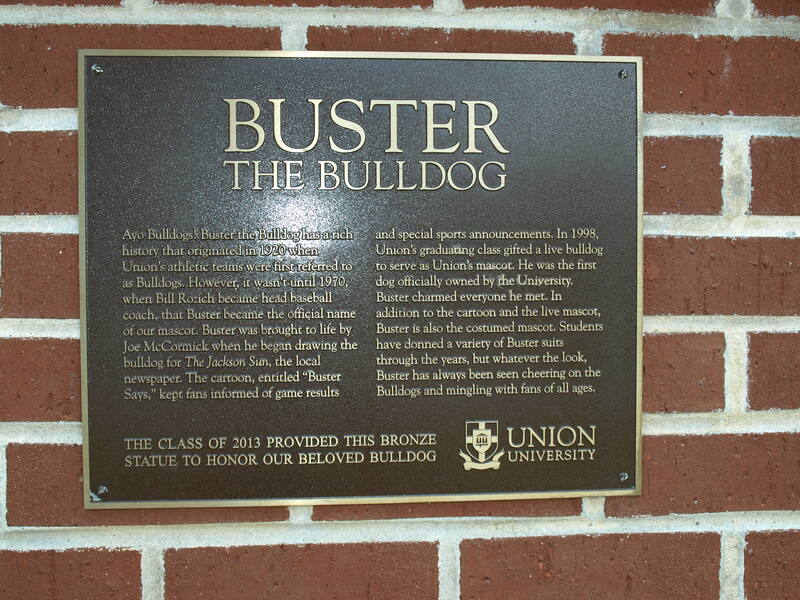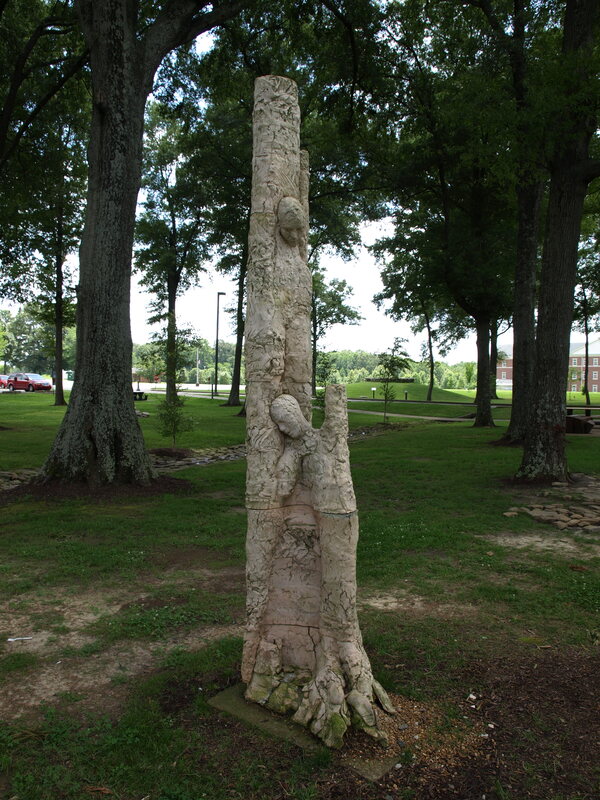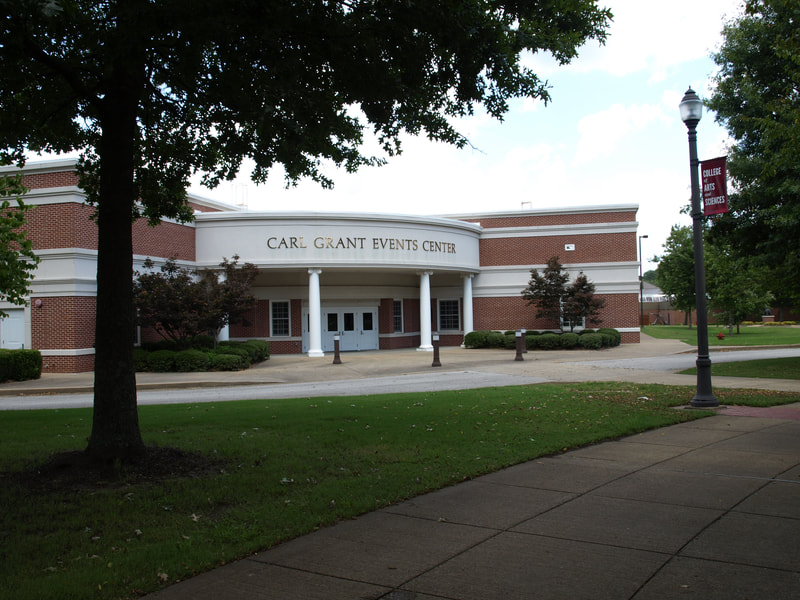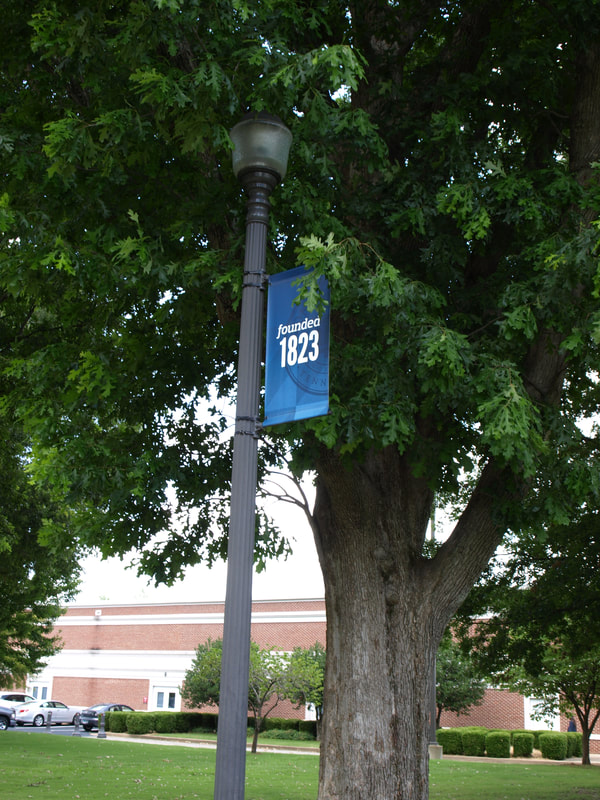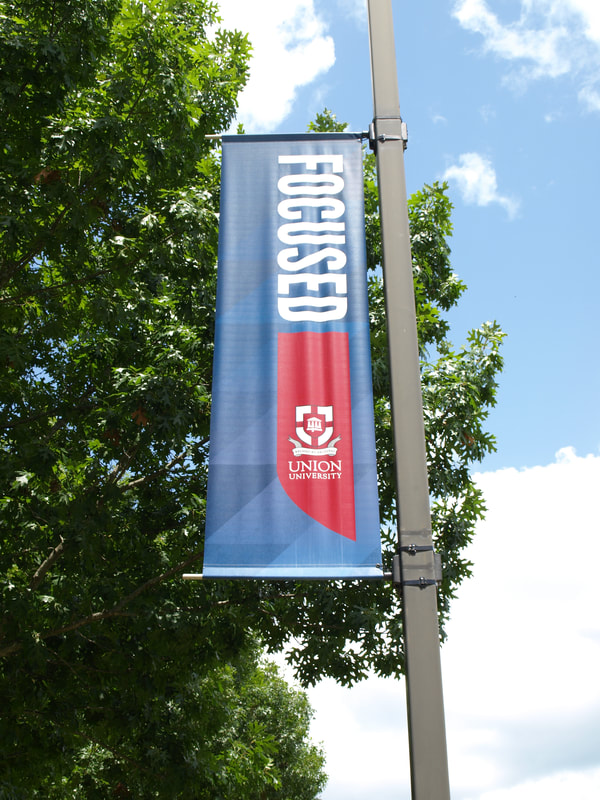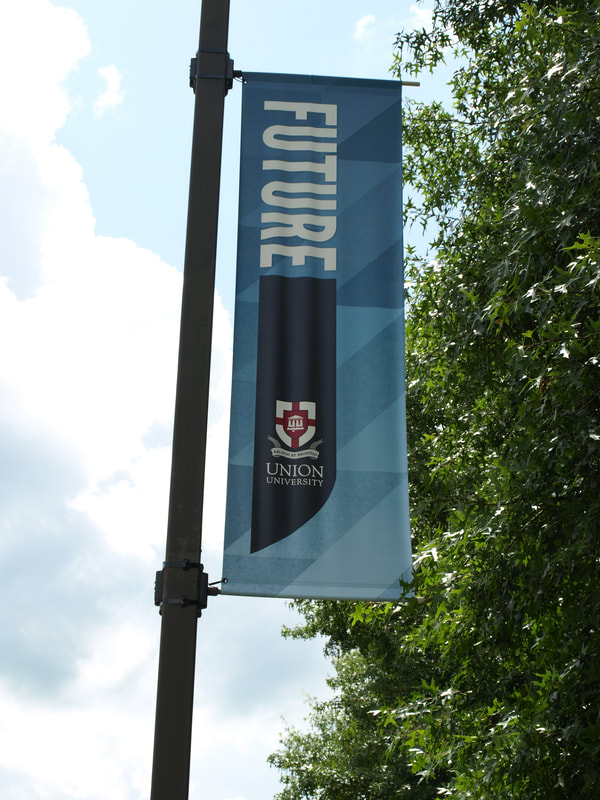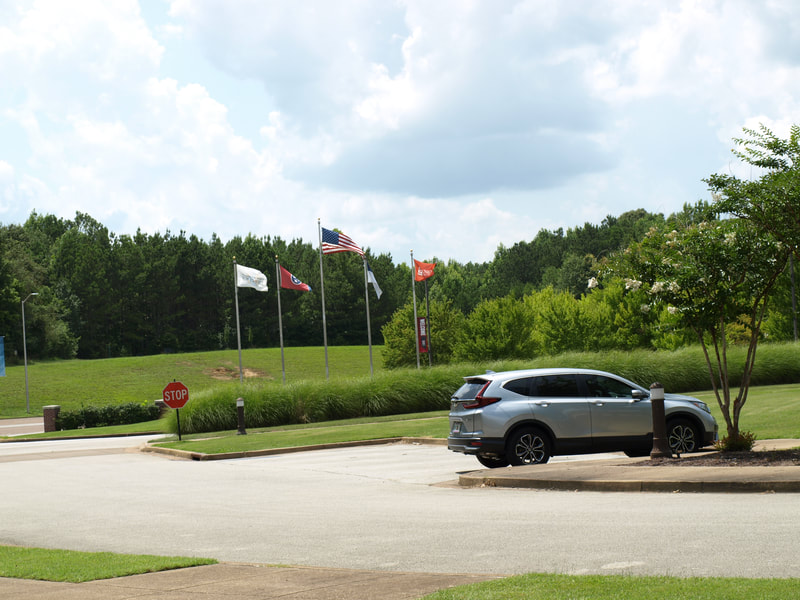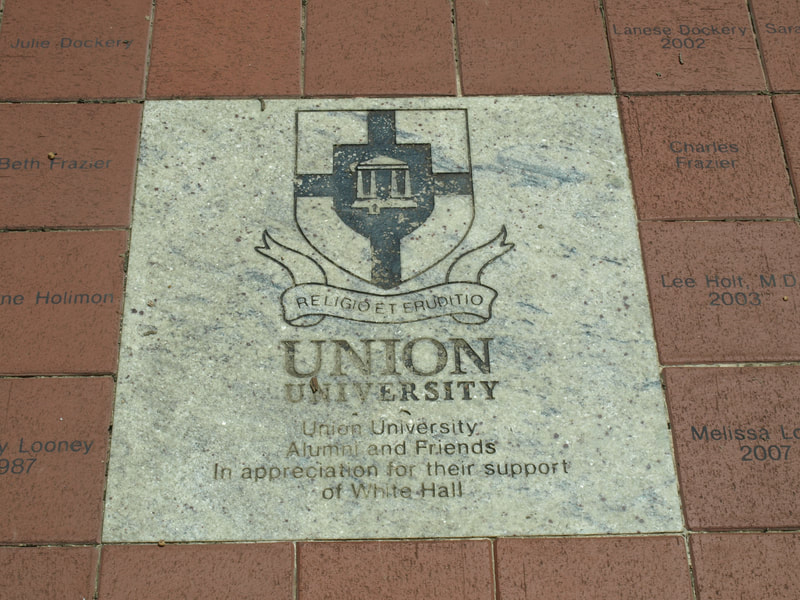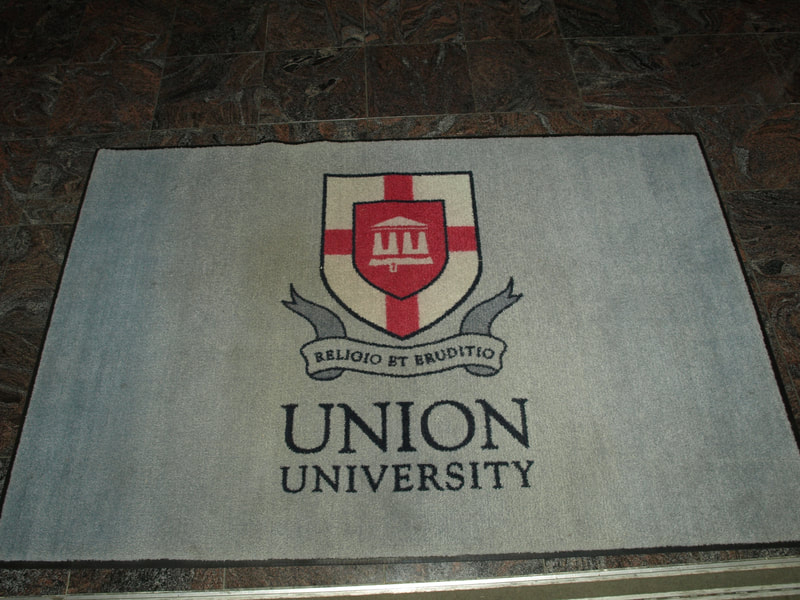University Grounds
Menu
University grounds
|
Today’s post is the Jackson, TN based Union University, an institution which traces its history back to 1823. Union is a sectarian institution affiliated with the Tennessee Baptist Convention (itself part of the South Baptist Convention). Its history, much like many institutions founded such a long time ago, reflects a complicated past and an amalgamation of different schools into the modern institution. But so complicated is the past of Union that the school has changed its official founding date on several occasions to reflect newly acquired information on its own history. As it is now understood, the university began life on Monday, February 3, 1823, when the Jackson Male Academy was chartered. As such, it is the oldest South Baptist Convention affiliated college (although the association with the church dates only to about 1874). As the population of the western third of Tennessee began to grow, so too did calls for a college. Colleges had been established in East and Middle Tennessee by the early 19th century, but much of West Tennessee at that time was still the property of the Chickasaw Nation. On January 3, 1844, the Academy received a state charter to create West Tennessee College. The preparatory academy would remain as a constituent of the college. In 1846 Congress sold lands in West Tennessee and gave the college $40,000 (about $1.4 million in 2021 value). Separately, the Baptist Church of Middle Tennessee created Union University in Murfreesboro, TN. Preparatory classes were offered there as early as 1841, although the official start date of the college proper is alternately given as 1847 (in historical reports) or 1848 (on the Union University webpage). The college had some success, and the institution prospered until the Civil War. During the war, the grounds were used as a hospital by both Confederate and alternately Union forces. Much of the campus was destroyed during the war, largely by Union troops who vandalized the place and shipped most things of value, including the library holdings, north. The Union troops used the doors, and door and window frames for firewood. It took several years after the end of hostilities to get the university back into acceptable shape to reopen. In 1868, Union entered its first class in seven years. The going was tough, however, and the institution would be dealt another blow by a financial crisis in less than five years. The financial crisis called the Long Depression began in 1873 which, along with a cholera epidemic, doomed the institution. Union University of Murfreesboro closed its doors in October 1873. By 1874, West Tennessee College was also experiencing financial woes resulting from the on-going Long Depression of 1873-1877. So difficult were the times that closure of the institution was considered. Meanwhile, the three major Tennessee Baptist Conventions held a meeting in Murfreesboro on April 10, 1874, to consider options for funding a college. The Board of Trustees of the now shuttered Union University were encouraged by the prospect and suggested the creation of a new university they tentatively called the “Grand Central University” which would, they hoped, be based at the Union campus. They invited the boards of Georgetown College (in Kentucky), Bethel College (in McKenzie, TN), and Mossy Creek Baptist College (now Carson-Newman University in Jefferson City, TN) to join them as a new unified college. The Baptist convention looked favorably at creating a new institution funded by the totality of the state convention. In an effort to keep their institution afloat and, importantly, in Jackson, the trustees of West Tennessee College offered the Baptists their institution – buildings, grounds, supplies, and endowment – if the new school would take over the campus. In September 1874, the church agreed, and the new Southwestern Baptist University was chartered in 1875 located at the West Tennessee College site. The name would revert to Union University in 1907, a homage to the past and to the Eaton family who was instrumental in the institution both in Murfreesboro and Jackson. But this new Union is not the one you will see today, at least in location. The institution’s site has changed several times as well. The Jackson Male Academy’s first location has been lost to history. In 1825, the Academy was said to be located in present-day downtown Jackson to the north of the then public square. I believe this is near the current Madison County Courthouse, although I could be wrong. It may have moved by 1834 but that seems uncertain. What is known is that in 1844 a James Carruthers sold the university 60 acres just east of downtown Jackson. The university would remain at that location for the next 131 years. Of course, the original Murfreesboro location of Union was only used until 1874 and was abandoned upon the merger. That site would regain life as a college years later as the Tennessee College for Women, founded on the site in 1907. That institution, also supported by the Tennessee Baptist Convention, would merge with Cumberland University in Lebanon, TN, in 1946. The site would sit vacant until 1950 when Central High School was built there. The Jackson campus of 1844 was considered more than adequate for some time, but over the years the space began to feel tight. By 1946, serious discussions began about finding additional space. Calls to relocate the university to a larger location grew stronger, even as construction of new buildings continued into the 1960’s. In 1967, the state opened Jackson State Community College and the then Union President, Francis Wright, stepped down to become president of the new institution (see my earlier entry on JSCC). Rumors began to circulate that the state would look to grow JSCC into a four-year college quickly. All of this hastened the desire to relocate. Consideration of other locales beyond Jackson was also in the mix. In the end, an option on a location on the north side Jackson was taken in 1968. In 1975, the university moved to the new campus which is on about 290 acres. There it remains and it is the “new” campus that is seen in the photos below. A few of the buildings from the 1844 campus remain, and I hope to return to Jackson at some point to photograph them for a future post. If you are a history buff, there is a great online pictorial on the old campus here. All of the photos in this post were taken in July 2021. The first set of photos are of The Logos. Logos, of course, is the Christian term meaning the Word of God and thus a very appropriate name for a building on the campus of a Christian college. The Logos is the home to the university library, as well as the offices of the president and provost, and a coffee shop (what university library doesn’t have a coffee shop these days?). The building opened in 2015 and consists of three floors, and the magnificent dome. The first three photos are the approach to the building from the north side. It is a beautiful building and you can see the dome when approaching campus from most directions for quite a while. The fourth photo is the building as seen from behind Jennings Hall, part of which can be seen in the frame. One of the great things about the region is the climate which allows for crape myrtle trees to blossom all summer long. You can see some young crape myrtles here. The fifth photo is obviously the sign for the structure, and the sixth is the front (i.e., the quad side) of the building. The following set of photos are of the Miller Tower and its dedication plaque. The tower stands in front of The Logos and the north end of the quad. The tower was completed in 2000 and was named for Elmer and Opha Miller. The Miller’s owned the Miller Lumber Company and were donors to the university. Opha was a member of the university’s Board of Trustees. The Miller’s contributed a great deal to the university, and she bequeathed her wealth to a foundation named in honor of her late husband. The foundation exists to serve the university. The bulk of the funding for the tower came from the Miller’s. In 2016, a 49-bell carillon was added to the tower. Eighteen of the bells are inscribed with Bible verses; the largest bell weights 1,500 pounds! The carillon was a gift of the foundation. The next five photos are of the quad, taken from various spots along its perimeter. It is a lovely green space. I was there during the summer and there were only a few students walking around. I imagine the area is full of people during the cooler periods of the academic year. I love the trees planted along the sidewalks as well as the proportion of green space to sidewalks and the street. The livability of a space is better with grass and trees in my opinion, and too many college campuses are encumbered by too much pavement and too little plant life. They have a very good balance at Union. Next up is White Hall. White is the home to Union’s College of Nursing and Health Sciences as well as Biology and Chemistry. White is named for Roy L. White, a former Board of Trustees member. White founded South Central Medical in Jackson and a major donor to Union. White Hall is currently the only academic building sitting on the south side of the quad. Here we have four views of the main (quad side) entrance to the building. Below are six photos of Jennings Hall. Jennings came about in part thanks to a large donation by James Ayers, a trustee of the university and owner of First Bank in Jackson. It takes its name from Ayers’ grandparents, William and Laura Jennings. The building was dedicated in a ceremony on December 1, 2000. The building is home to Union’s School of Theology and Missions. Also housed there are the departments of communications and music. The first two photos are of the quad side of the building. Next are two photos of the dedicatory plaques. The last two photos are of the rear of the building. The fifth photo is the rear courtyard looking southwest. You can see crape myrtles of two colors blooming in the courtyard as well as the fountain in the rear. The last photo is the fountain itself looking directly at the back of the building. There is a residence complex on campus which is also named for Ayers, but I did not get a photo of it. At the western end of the quad sits Providence Hall seen in the photos below. Providence is home to the College of Pharmacy, and in addition to those administrative offices, houses classrooms, a practice pharmacy, and simulation labs. The building opened in 2010. The first two photos are of the front of the building. The third is the sidewalk in front of the main (quad side) entrance of the building. The fourth is the dedication plaque and the last is the marker for a time capsule buried in front of the building when it opened in 2010. The Union athletics teams are the Bulldogs and their main mascot is Buster the Bulldog. The set below begins with three photos of a statue of Buster and his dedication plaque which stands between the Penick Academic Complex and the Barefoot Student Union Building. The first two photos are looking northeast and Penick is in the background. The plaque is on the front of the statue. It is actually quite large and the pictures do not give the true scale of the thing. The fourth and fifth photos are of some campus art. The fourth is a piece by artist Eric Botbyl called “Exile and Exodus”. Botbyl is a Humboldt, TN based artist and a 2001 alumnus of Union. The last photo is a piece by A. Lee Benson called “The Prodigal”. Benson is on faculty at Union and a three-time alumnus of the University of Tennessee, Knoxville Below are two student support buildings. First is the Carl Grant Events Center. I looked online for quite a while, and I was unable to figure out who Carl Grant is (or was). Next is the Barefoot Student Union Building. Barefoot is one of only three structures on campus to carry the name of a former president. Hyran E. Barefoot was the 15th president of the university, serving in that capacity from 1986 to 1996. The other structures, both residence hall complexes, named for former presidents are not pictured in this post. The Watters Residence Complex is named for Henry E. Watters (the 10th president) and the Hurt Residence Complex is named for John J. Hurt (the 11th president). Both complexes, along with the Ayers Residence Complex mentioned above, came about thanks to a tornado. On the evening of February 5, 2008, an F4 tornado touched down on campus with sustained winds between 166 to 200 miles per hour. A number of buildings were damaged, and eighteen dorms were completely destroyed. The various new residence complexes were built thereafter. Oddly enough, that was not the first time a tornado hit the campus. An F1 tornado also touched down on Union on November 10, 2002. That makes three tornados that have hit a college campus in Jackson. The other was the April 18, 1975, tornado that touched down on the Lambuth University campus (see my earlier entry on the University of Memphis, Lambuth). Finally, we have some examples of branding seen across campus. The ever-present lamppost banner may be seen around campus, in this case taking two forms. As can be seen in the first photo, Union has a fairly typical banner that has the date of the founding on one side (and I believe the university coat of arms on the other). The also have larger ones with slogans as well, two of which may be seen in the second and third photos. A set of flagpoles at the west end of the quad have the Union University flag flying in the fourth photo. The fifth photo is a stepping stone in front of White Hall which has the seal engraved in it. Finally, even the doormats carry the seal, this one seen inside Providence Hall. If you are interested in learning more about Union, I would recommend the book A History of Union University by Richard Hiram Ward. Published in 1975, it gives a thorough history up to that point.
0 Comments
Your comment will be posted after it is approved.
Leave a Reply. |
AboutUniversity Grounds is a blog about college and university campuses, their buildings and grounds, and the people who live and work on them. Archives
February 2024
Australia
Victoria University of Melbourne Great Britain Glasgow College of Art University of Glasgow United States Alabama University of Alabama in Huntsville Arkansas Arkansas State University Mid-South California California State University, Fresno University of California, Irvine (1999) Colorado Illiff School of Theology University of Denver Indiana Indiana U Southeast Graduate Center Mississippi Blue Mountain College Millsaps College Mississippi Industrial College Mississippi State University Mississippi University for Women Northwest Mississippi CC Rust College University of Mississippi U of Mississippi Medical Center Missouri Barnes Jewish College Goldfarb SON Saint Louis University Montana Montana State University North Carolina NC State University Bell Tower University of North Carolina Chapel Hill Tennessee Baptist Health Sciences University College of Oak Ridge Freed-Hardeman University Jackson State Community College Lane College Memphis College of Art Rhodes College Southern College of Optometry Southwest Tennessee CC Union Ave Southwest Tennessee CC Macon Cove Union University University of Memphis University of Memphis Park Ave University of Memphis, Lambuth University of Tennessee HSC University of West Tennessee Texas Texas Tech University UTSA Downtown Utah University of Utah Westminster College Virginia Virginia Tech |
